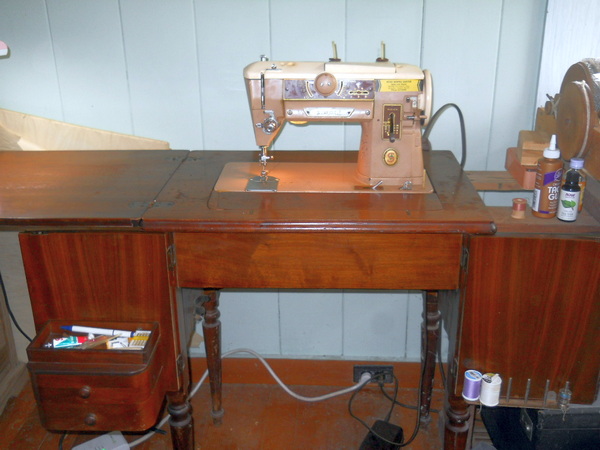
Room Cleaning & Sewing Machines
Well, it all started with room cleaning, then add in an estate sale. I've been meaning to get the sewing room organized, but it hasn't been a high priority. There's a mediocre newish (early 2000's) sewing machine in a cabinet that it sorta fit in, the solid metal 70's Kenmore that didn't have a cabinet, a solid White treadle and a few other sewing machines here and there although they need refurbishing or repair before they'd be useful.
Then Saturday came along and there was an estate sale. A nice unassuming black box followed me home and events from that has changed a lot of things.
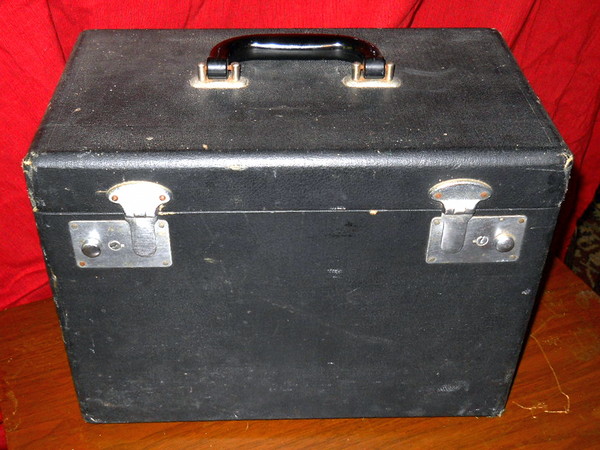
Doesn't look like much of anything, does it? Nice black box, couple of silver hasps, a handle and it doesn't weigh that much either. Kinda the sorta thing you'd expect to find a telescope or some sort of lab equipment in? Maybe some sort of metering equipment? Nope! The inside is much better than that!
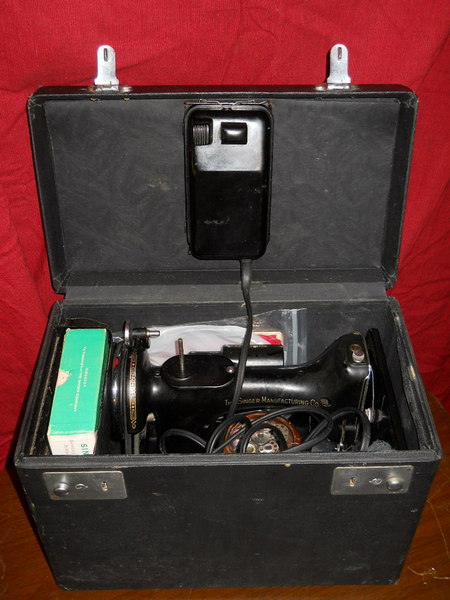
This is one of the elusive Singer Model 221 Feather Weight sewing machines! This particular one was made in New Jersey at Singer's Elizabethport facility in 1938. At least, going by the serial number, that's where it would have been made.
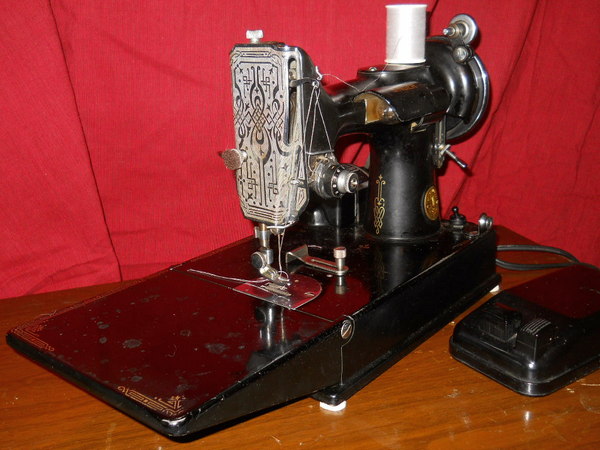
It's a nice little machine, kinda a miniature sized antique sewing machine. I think it's aluminum instead of cast iron, it weighs very little. Sews a lovely seam, either forwards or in reverse, but that's all the sewing stitches it does. The older machines didn't make fancy stitches, they had attachments which would manipulate the fabric into ruffles, pleats or rolled hems instead of putting fancy stitches on flat fabric. Not having a zig zag stitch in kinda a drawback, especially for a machine I'd want to use so this machine will probably move off to a new home sometime soonish.
However, while trying to find out about this little black sewing machine, I stumbled across quite a few vintage sewing machine websites. Quite a few of them also mentioned the Singer 401/403/500 series of machines. Hey! There's one of those I've been trying to sell at the little "Treasures" shop here in town where we also sell Hula Bunny yarn.
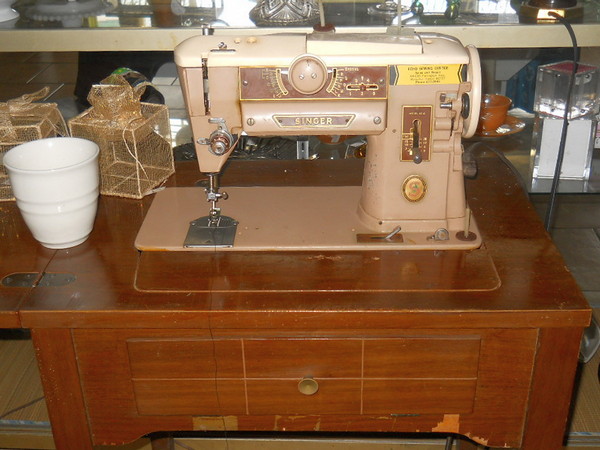
Well, it isn't in a very attractive cabinet, it hadn't been spiffed or cleaned or had much love. But, the price reflected that and still it didn't find a new home. Possibly for the same reasons I'd not wanted to keep it. However, on these vintage sewing machine websites, they mentioned that the Singer 401A was a direct drive machine. It has gears instead of drive belts. A really solidly built machine almost entirely made of metal, very little plastic parts at all. So, hey! Who knew? Which means, as a result of trying to find out about the Singer 221, the Singer 401A was taken out of the shop and brought home.
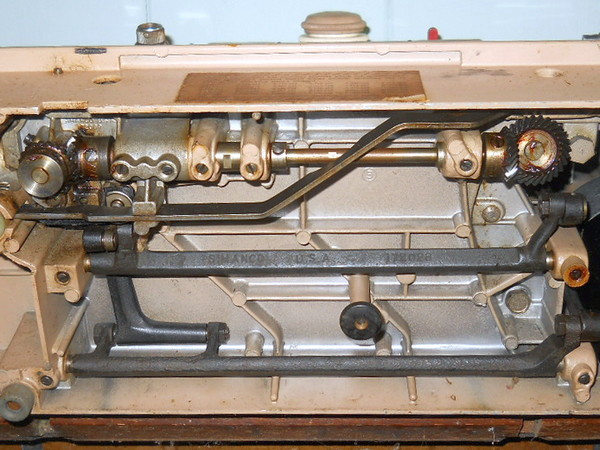
See? Gears and solid metal. No belts, no plastic. Not sure how long this machine could last, but probably longer than me. It was built in 1961 in Anderson, South Carolina and with a bit of oil, it's good to go for who knows how much longer? I think it will outlast any of the new machines, especially the ones that have electronics since once those are broken, there's no fixing them without either new parts or lots of technical knowledge. These old vintage machines are pretty solid and can be fixed with just household tools.
It was still in an ugly cabinet, though. With only one very small drawer. So, the cabinet had to go. I'd had an older cabinet which had shown up at another yard sale that didn't come with a machine. I'd originally planned on putting the metal Kenmore in it, but the Kenmore doesn't have the holes at the back for the cabinet hinges to fit into. Ratz! I'm really rather fond of the Kenmore, it's been my go-to machine since about 1978 or so. Since the Kenmore didn't fit, I'd put in a fairly new White machine into the cabinet, but that didn't have anywhere near the same quality of manufacture as the older machines.
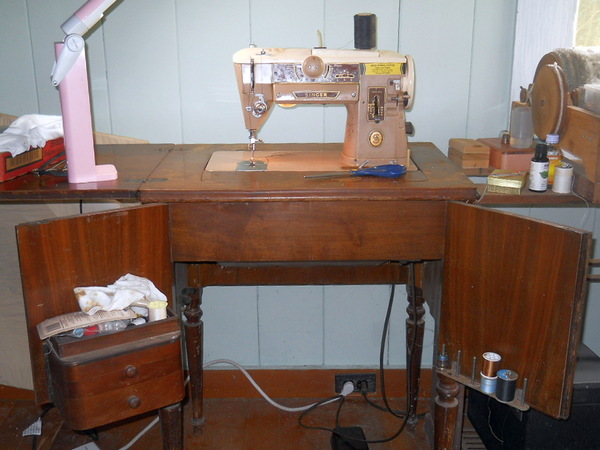
While browsing around on the vintage sewing machine sites, I found out that there's folks who keep track of sewing machine cabinets as well as the sewing machines themselves. The newer ugly cabinet didn't make the list on the website, but the older cabinet here that I like is "Singer Cabinet #47". I also found out that there's a much nicer cabinet, an Art Deco Singer Cabinet #42 so now I want one of those! Oh well, the one here will have to do. I like it much better than the new one the machine was installed in when I got it. The older cabinet is a couple inches shorter and has more drawers. Prettier, too. So, the Singer 401A was put into the older cabinet.
When cabinet #47 was made, the sewing machine bases seem to have been smaller. The cabinet had to be modified earlier to fit the White machine that I'd put in it earlier. Although, the White didn't fit that well since although the base was deeper front to back, it was shorter side to side. The Singer 401A fit much better than the White, it's the same depth as the White but longer to fill up the whole space.
Getting the machine set into the cabinet was just the beginning. Then there was getting the machine to work as well. I'd not used it before so it had never been refurbished. The Singer 401A has a stack of internal cams which create the various fancy stitches as well as the standard straight stitch, too. As the vintage websites mentioned, frequently there's issues with that stack of cams. Since one of the cam selectors had been put back together wrong, I'm guessing someone had been in there trying to get it to work before. But, what with the internet, there's pictures of the way it's supposed to be if you look around long enough. Once that was reinstalled correctly and everything else was loosened up and oiled and lubed, the machine is running again. It did take quite awhile to get the machine to zigzag properly, but it didn't take much more than oil and elbow grease to reach that point.
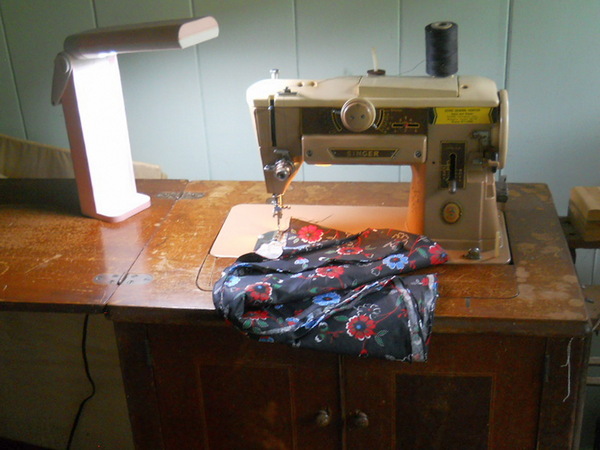
The first project with the revitalized Singer 401A was to hem a circular table cloth. There's a 'hemming' presser foot that the machine came with, it rolls the fabric over by one eighth inch and then sews it flat. A one eighth thick hem would be imaginably difficult to make without the presser foot.
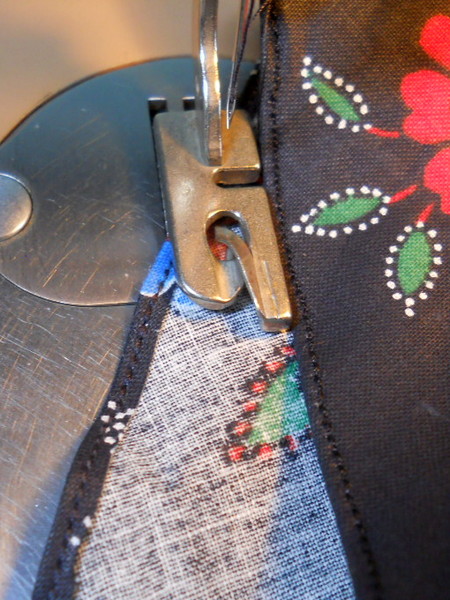
That's kinda insane to think about doing with a new machine. It would require ironing, pinning and all kinds of things if it could be done at all. There's also a ruffler attachment, a pleater attachment and one for doing something else, although I'm not quite sure exactly what yet.
I did find out that the bobbins for most Singer sewing machines are different than the ones that fit the 401A. The 'new' bobbins are flatter than the usual ones. Guess I'll have to have two sets of Singer accessories since the old Kenmore fits the usual Singer bobbins and attachments.
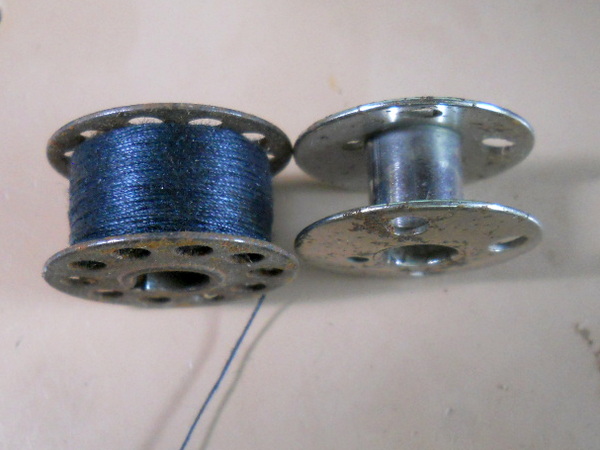
The 401A machine is not only now functional, but it's now exceptionally functional. It sews a wonderful seam, it's got enough depth of function that if a mistake is made it will cover for you. I'm really liking this machine. It's still not as smooth running as I think it will be eventually, but it is amazingly smooth running at the moment considering how incompletely it's been restored. I still need to clean and polish the it.
The table looked bad enough that it got cleaned up before the machine. It hasnt' had a complete restoration, that would involve regluing veneer amonth other things. However, just as a quick cleanup, the cabinet improved immensely, too.

The cabinet was pretty much in this state when it was found at a yard sale. Empty of a machine, not much finish left, dusty and stained. However, looking around for cleaning supplies, there was this can of Howard's "Restore-A-Finish". Since the 401A is also known as a "Slant-O-Matic" sewing machine, that just seemed to be the proper answer. It turned out to be some amazing stuff.
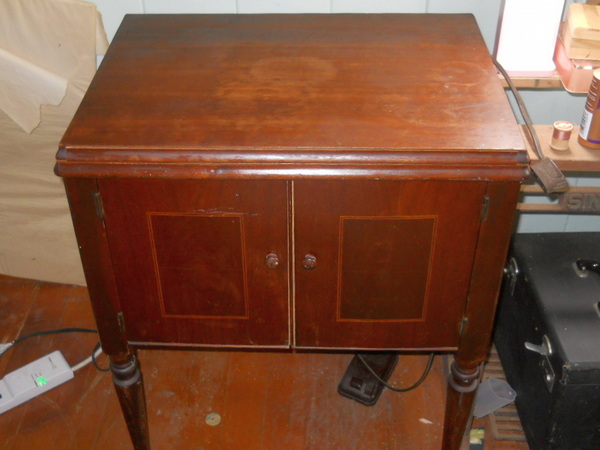
One layer? Is it a layer? In any case, after wiping the Howard's "Restore-A-Finish" on the sewing cabinet, this is what it looked like. Much much better than before, although it's not exactly a fine furniture finish.
Guess I should go sew something now!
